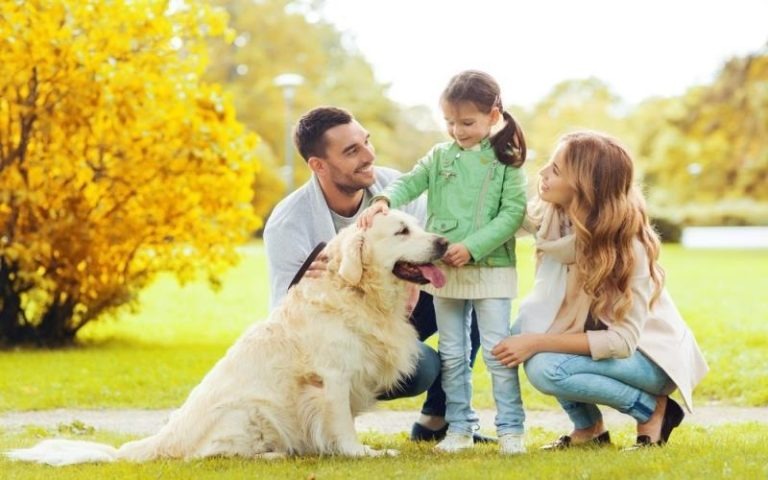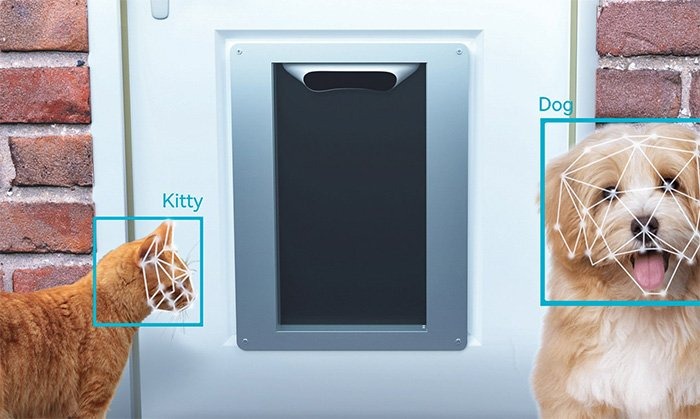
Emotional Intelligence in Pets: Can Animals Read Our Moods?
From comforting gestures to uncanny awareness of our moods, pets seem to understand us in ways that go beyond simple training. This article explores the science of emotional intelligence in animals, revealing how dogs, cats, horses, and other species perceive human emotions, respond empathetically, and form profound emotional bonds, highlighting the remarkable connection between humans and their animal companions.
🐶 Pet Star
63 min read · 13, Oct 2025

Introduction: A Connection Beyond Words
If you’ve ever had your dog curl up beside you when you’re feeling low or your cat stare deeply into your eyes as if understanding your worries, you’ve probably wondered — can pets really sense our emotions? The emotional connection between humans and animals has fascinated scientists, pet owners, and psychologists for decades. What once seemed like pure coincidence is now being studied through neuroscience, behavioral experiments, and even hormonal research.
Animals, especially domesticated ones like dogs, cats, horses, and parrots, have evolved alongside humans for thousands of years. During this time, they’ve learned to interpret our gestures, tones, and even facial expressions. The science of emotional intelligence in pets delves deep into how animals recognize, respond to, and sometimes even mirror human emotions — often in ways that surprise even the most skeptical minds.
1. Understanding Emotional Intelligence in Animals
Emotional intelligence (EI), a term popularized by psychologist Daniel Goleman, refers to the ability to recognize, understand, and manage one’s own emotions as well as empathize with others. When applied to animals, EI encompasses their capacity to perceive emotional cues in humans and other animals — and to react appropriately.
Research shows that animals like dogs and cats not only recognize human emotional states but often adapt their behavior in response. For example, a dog may become more attentive and affectionate when its owner cries, while a cat may become quieter and stay close, offering subtle comfort. These reactions go beyond simple conditioning — they point to an intuitive form of empathy and understanding.
2. The Science Behind Emotional Perception
Dogs: Masters of Human Emotion
Dogs have co-evolved with humans for over 30,000 years, and in that time, they’ve become experts at decoding our emotions. Studies using functional MRI scans reveal that dogs’ brains activate differently when hearing happy versus sad human voices. They respond not just to tone but also to the emotional content behind words.
In one study conducted by the University of Lincoln, dogs were shown photographs of human faces displaying happiness, anger, and sadness while also hearing corresponding emotional sounds. Remarkably, the dogs consistently matched the correct expressions with the right sounds — demonstrating cross-modal emotional recognition, a sign of advanced cognitive empathy.
Cats: The Subtle Observers
Cats often get labeled as aloof, but research paints a different picture. A 2015 study published in Animal Cognition found that cats can distinguish their owner’s voice from strangers’ and may alter their behavior based on their owner’s emotional tone. Cats tend to mirror their owner’s moods — becoming calm when their human is relaxed, or anxious when their owner is stressed.
Horses: Empathic Companions
Horses, too, are highly sensitive to human emotions. A study from the University of Sussex showed that horses can recognize human facial expressions and remember emotional states. When shown a picture of an angry person followed by the same individual in real life, horses displayed elevated heart rates and signs of stress — proving they can recall negative emotions associated with specific humans.
Parrots and Elephants: Emotional Resonance in the Wild
Parrots, especially African greys, are known for their advanced communication and empathy. They can mirror human emotions and even respond vocally to express concern or happiness. Elephants, on the other hand, demonstrate compassion not only toward humans but also toward other elephants — mourning their dead and helping distressed herd members. These behaviors suggest an emotional intelligence that transcends species barriers.
3. How Animals Read Our Emotions
Animals rely on a combination of sensory cues and behavioral signals to read our emotional states:
- Facial Expressions: Dogs, horses, and even goats can interpret human facial expressions. They learn to associate smiles or frowns with positive or negative outcomes.
- Vocal Tone: Animals pick up on changes in pitch, speed, and intensity. A soothing tone may calm them, while harsh tones trigger stress.
- Body Language: Pets watch our posture, movement, and gestures. Slumped shoulders or heavy footsteps may signal sadness or fatigue.
- Scent: Emotions like fear and stress produce hormonal changes that alter our scent. Dogs, with their extraordinary sense of smell, can detect cortisol (the stress hormone) in human sweat and breath.
- Energy and Rhythm: Many animals respond to the energy we project — whether calm, anxious, or excited — and adjust their own energy accordingly.
4. The Hormonal Connection: Oxytocin and Empathy
One of the most fascinating discoveries in recent years is the oxytocin feedback loop between humans and their pets. Oxytocin, often called the “love hormone,” plays a central role in bonding and emotional connection.
When a person looks lovingly into their dog’s eyes, both the human and the dog experience a rise in oxytocin levels — similar to the bond between a mother and child. This hormonal synchronization not only strengthens emotional attachment but also enhances the animal’s ability to sense and respond to the human’s mood.
Cats, too, may experience a similar (though less intense) oxytocin response when purring while being petted, indicating mutual emotional regulation.
5. Emotional Contagion: When Animals Mirror Our Feelings
“Emotional contagion” is a phenomenon where one individual’s emotions trigger similar feelings in another. In the context of pets, it means animals often mirror their owner’s emotions — a key indicator of empathy.
For example:
- Dogs of anxious owners often show higher cortisol levels themselves.
- Cats living with depressed individuals may exhibit lethargic or withdrawn behavior.
- Horses trained by calm riders tend to perform better, while those handled by nervous riders may become jumpy.
This mirroring effect demonstrates how closely intertwined our emotional worlds are — and how animals not only perceive but absorb our emotions.
6. Can Animals Sense Illness, Anxiety, or Death?
Many stories and scientific observations suggest that animals can detect illnesses or emotional distress long before humans can.
- Dogs trained for medical detection can smell chemical changes linked to cancer, diabetes, and even COVID-19.
- Therapy dogs are known to calm anxiety and depression patients through intuitive presence, often without verbal instruction.
- Cats in nursing homes have been reported to stay near patients nearing death, sensing changes in body chemistry or energy.
These abilities are not mystical but grounded in biological sensitivity — animals’ keen perception of smell, sound, and micro-expressions gives them access to information beyond human awareness.
7. Emotional Intelligence in Wild Animals
Even in the wild, animals display emotional intelligence within their social structures.
- Elephants mourn the death of family members and exhibit post-traumatic stress after witnessing violence.
- Dolphins support injured companions and even rescue drowning humans.
- Primates engage in reconciliation behaviors after conflicts, such as hugging or grooming, much like humans making peace.
Such behaviors indicate empathy, self-awareness, and an understanding of emotional states — suggesting that emotional intelligence is not exclusive to domesticated animals but is a broader evolutionary trait.
8. Why Emotional Intelligence Matters in Pet Care
Understanding that pets possess emotional intelligence transforms how we care for them. It means recognizing that:
- Pets thrive in emotionally stable environments.
- Harsh discipline or neglect can lead to emotional trauma.
- Positive reinforcement and affectionate communication enhance trust and learning.
For pet owners, this awareness encourages mindful interaction — speaking gently, maintaining consistency, and respecting an animal’s emotional space. Emotional intelligence in pets, therefore, demands emotional responsibility in humans.
9. The Future of Research: Decoding Animal Emotions
Modern technology is opening new doors to study animal emotions. Researchers are using AI emotion recognition tools, heart-rate monitors, and neuroimaging to analyze how animals perceive and process emotional cues.
For instance, AI software can now detect stress or happiness in dogs by analyzing tail movement and facial expressions. Future studies may help us communicate better with our pets — perhaps even translating emotional signals into data or voice feedback.
The more we learn about animal emotional intelligence, the clearer it becomes: pets aren’t just companions; they’re emotionally attuned beings with inner lives that parallel our own.
For centuries, humans have shared their lives, homes, and emotions with animals, especially pets like dogs, cats, and horses. What seems like companionship has, in recent years, become a topic of scientific intrigue: can animals truly sense our emotions, or are their responses just learned behavior? The concept of emotional intelligence in pets explores their remarkable ability to recognize, interpret, and respond to human moods through cues such as facial expressions, body language, voice tone, and even scent. Emotional intelligence, a term popularized by psychologist Daniel Goleman, refers to the awareness and management of emotions — both one’s own and others’. In animals, this manifests as empathy, social awareness, and emotional response to humans or other animals. Dogs, for instance, have co-evolved with humans for over 30,000 years, developing an uncanny ability to read human signals. Functional MRI scans reveal that a dog’s brain reacts differently to joyful and sorrowful tones, proving they interpret emotional meaning rather than mere sounds. They can associate a smiling face with positive experiences and a frowning one with discomfort or punishment. A University of Lincoln study showed that dogs could correctly match human facial expressions with corresponding emotional sounds, showing advanced emotional perception. Cats, often misunderstood as aloof, also possess deep emotional awareness. They can distinguish their owner’s voice from strangers and often mirror human emotions — curling up quietly when their owner is sad or showing playfulness when the home’s energy is joyful. A 2015 study in Animal Cognition confirmed that cats adjust their behavior according to their owner’s mood, a subtle yet clear demonstration of emotional sensitivity. Horses, too, are extraordinary readers of human emotions; they can recognize and remember human facial expressions. In one University of Sussex study, horses exposed to an image of an angry face later reacted with visible stress — raised heart rates and avoidance — upon meeting that person in real life, proving they store emotional impressions of humans. Beyond domesticated pets, animals like parrots, elephants, and dolphins also demonstrate empathy and emotional resonance. Parrots not only mimic voices but adjust their tone to human emotion, while elephants display grief rituals, comfort distressed herd members, and remember both kind and cruel human interactions. These examples highlight that emotional intelligence in animals isn’t a human monopoly; it’s an evolutionary advantage rooted in survival and social bonding. Animals read human emotions through multiple channels — visual cues like facial expressions and body posture, auditory cues like tone and rhythm, and olfactory cues such as scent changes triggered by stress or fear. Dogs, with their extraordinary sense of smell, can detect cortisol levels — the stress hormone — in human sweat or breath, enabling them to sense anxiety or illness even before symptoms show. This sensitivity forms the basis of therapy and service dogs trained to assist people with PTSD, anxiety, or diabetes. Similarly, cats and horses detect behavioral and energy shifts — they respond not just to what humans do, but to how they feel. One fascinating aspect of this connection is the “oxytocin feedback loop.” Oxytocin, known as the love or bonding hormone, increases during affectionate interactions between humans and their pets. When a dog gazes into its owner’s eyes, both experience a rise in oxytocin, reinforcing emotional bonds similar to those between a parent and child. This hormonal exchange fosters mutual trust and emotional synchronization, deepening empathy on both sides. Cats also release oxytocin when they purr while being petted, suggesting that their calm presence helps regulate human emotions too. Another intriguing phenomenon is “emotional contagion” — when one individual’s emotion influences another’s. In households, pets often mirror their owner’s moods: dogs of anxious owners exhibit elevated cortisol levels, while cats living with depressed individuals may appear withdrawn or lethargic. Horses trained by calm handlers perform better than those managed by tense, nervous riders. These parallels prove how intertwined human and animal emotional worlds are — animals not only perceive emotions but absorb them, reflecting the deep interspecies connection that transcends words. Beyond empathy, animals also display astonishing perceptiveness toward illness and death. Countless accounts and studies confirm that dogs can detect cancer, seizures, or hypoglycemia through subtle scent changes. Therapy dogs intuitively comfort patients in hospitals or nursing homes, sometimes lying beside those nearing death — not from training alone, but from instinctive awareness of biological and emotional shifts. Cats, too, have been observed to remain close to dying individuals, sensing chemical changes linked to the end of life. In the wild, emotional intelligence is just as vital. Elephants grieve their dead, dolphins support injured companions, and primates display reconciliation behaviors after conflict — hugging, grooming, or sharing food. These acts of compassion reveal that empathy is not an artificial trait developed through domestication but an ancient, evolutionary mechanism that strengthens group survival. The implications of recognizing emotional intelligence in animals are profound. It transforms how we perceive and care for our pets, urging us to treat them not as property but as sentient emotional partners. Understanding that our moods directly influence their well-being encourages mindful pet ownership — speaking gently, maintaining emotional consistency, and creating calm environments where animals feel safe. Positive reinforcement, trust-building, and affectionate interaction not only make training easier but also enhance pets’ emotional health. Conversely, neglect, harsh punishment, or chaotic households can induce anxiety or depression in pets, mirroring human mental health patterns. Modern research, aided by AI and neuroscience, continues to reveal how animals process emotions. Emotional recognition software now analyzes tail wagging, facial micro-expressions, and ear positions to interpret canine emotions. Neuroimaging studies are decoding how animal brains process love, fear, and empathy. Soon, technology may help humans interpret pet emotions in real time, deepening communication and care. The evidence leaves little doubt: pets are emotionally intelligent beings capable of reading, responding to, and even regulating human emotions. This connection isn’t supernatural; it’s a product of evolution, biology, and shared experience. When we look into our pet’s eyes and feel understood, it’s not an illusion — it’s a moment of true interspecies empathy, a silent conversation of hearts that speaks louder than any words ever could.
Humans have long sensed a mysterious connection with animals, particularly pets like dogs, cats, and horses, often noticing how their companions seem to understand emotional states without verbal communication, responding to sadness with comforting behaviors or joining in joyful moments with enthusiasm, and modern research increasingly confirms that these interactions are not mere coincidence but the result of emotional intelligence in animals, a phenomenon that involves the ability to perceive, interpret, and respond appropriately to the emotions of others, and while emotional intelligence in humans is defined by awareness of one’s own emotions and the capacity to empathize with others, in pets it manifests as keen observation, social sensitivity, and behavioral adaptation, allowing them to react in ways that strengthen bonds with their human caregivers; dogs, arguably the most studied pets in this regard, have co-evolved with humans for tens of thousands of years, becoming highly skilled at reading human facial expressions, body language, and vocal intonations, a fact that has been verified in studies using functional MRI scans, which demonstrate that dogs’ brains respond differently to happy, neutral, or angry human voices, showing that they do not simply react to sound but actually process emotional content, a remarkable ability known as cross-modal perception, further supported by research in which dogs matched visual cues of facial expressions with emotional vocalizations correctly at rates significantly higher than chance, demonstrating not just learned behavior but genuine comprehension of emotional states; cats, often stereotyped as aloof or indifferent, also exhibit subtle forms of emotional intelligence, as studies show they can distinguish their owner’s voice from strangers and modulate their behavior depending on the perceived mood of the person, showing increased affection during sadness or anxiety and withdrawing when tension or anger is detected, and while they are less overtly demonstrative than dogs, their sensitivity to energy, tone, and environmental cues reflects a nuanced awareness of human emotion that has likely evolved alongside humans due to close domestication, whereas horses, large and sensitive creatures, are capable of recognizing and remembering human expressions, reacting to angry faces with elevated heart rates and signs of stress, illustrating a capacity to associate prior emotional experiences with real-life encounters, and this skill has practical implications in equestrian training and therapy, as horses respond better to calm, confident riders, demonstrating the impact of emotional states on animal behavior; beyond these common pets, research shows that highly social and intelligent animals like elephants, dolphins, and parrots also exhibit sophisticated emotional perception, with elephants mourning deceased herd members, comforting distressed companions, and even remembering both positive and negative interactions with humans, while dolphins are known to assist injured peers or humans, indicating empathy and cooperative behavior, and parrots, particularly African greys, can adjust vocalizations to respond to human emotional cues, reflecting the cross-species applicability of emotional intelligence; one of the key mechanisms facilitating this interspecies understanding is the perception of multiple sensory cues: animals read facial expressions to detect emotions such as anger, happiness, or sadness, listen to the tone and rhythm of voices to gauge emotional states, observe body language for subtle signals of tension or relaxation, and, in some cases, detect chemical changes associated with stress or fear through olfaction, such as dogs sensing cortisol in sweat, allowing them to respond to physiological as well as behavioral cues, a sensitivity that underpins the effectiveness of medical detection dogs, therapy animals, and companion pets in supporting human emotional well-being, and this biological attunement is further enhanced by the oxytocin feedback loop, in which mutual gaze and affectionate interaction between a pet and its owner trigger the release of oxytocin in both, strengthening bonds, fostering trust, and reinforcing emotional connection in a manner analogous to the parent-infant bond in humans, a process observed in dogs and cats alike, demonstrating that pets are not only responding to our emotions but are also emotionally invested in the interaction, forming a reciprocal and dynamic relationship; another facet of emotional intelligence in animals is emotional contagion, the phenomenon where the emotion of one individual influences another, with numerous studies showing that pets mirror their owners’ moods, leading dogs of anxious owners to exhibit elevated cortisol levels, cats living with depressed owners to become withdrawn or lethargic, and horses trained by nervous handlers to perform more poorly or display stress-related behaviors, highlighting that pets’ emotional states are intimately linked to those of their humans, which underscores the ethical responsibility of owners to maintain emotional stability and provide nurturing, positive environments for their animals, as negative experiences such as neglect, harsh discipline, or chaotic household conditions can provoke stress, anxiety, or depression in pets, demonstrating that emotional intelligence is not only a trait of animals but also a factor in the dynamics of human-animal relationships; further evidence of pets’ emotional awareness comes from their ability to detect illness, impending seizures, or other physiological changes in humans, as seen in trained medical alert dogs, who identify chemical changes in sweat or breath associated with diabetes, cancer, or other medical conditions, and even untrained pets often display comforting behaviors toward sick or distressed owners, suggesting that their sensitivity to emotional and physical cues extends beyond social interaction to predictive and supportive behaviors, while cats, though less formally studied, have been reported to stay near or attend to owners who are ill or in crisis, reflecting an intuitive understanding of subtle bodily and emotional signals; in the wild, emotional intelligence is not restricted to domestic animals, with social species such as elephants, dolphins, and primates demonstrating empathy, mourning, reconciliation, and cooperative behavior, all of which require the recognition and response to the emotions of others, highlighting that emotional intelligence is an evolutionary trait critical for social cohesion, survival, and cooperation; recognizing that pets possess emotional intelligence has profound implications for human caregivers, as it emphasizes the need for mindful interaction, patience, and positive reinforcement to maintain pets’ mental and emotional well-being, and it suggests that humans can learn from the emotional attunement of animals, cultivating awareness, empathy, and nonverbal communication skills; modern research tools, including AI-driven emotion recognition, neuroimaging, and behavioral analysis, are now allowing scientists to decode the nuanced ways animals perceive and process human emotion, from tail wagging and ear positions in dogs to vocal pitch adjustments in parrots, with potential applications in improving human-animal communication, therapy, and animal welfare; in conclusion, animals’ ability to perceive, respond to, and mirror human emotions, supported by sensory acuity, hormonal bonding, and evolutionary adaptation, demonstrates that pets are emotionally intelligent beings capable of empathy, emotional contagion, and interspecies understanding, and this awareness should guide human behavior toward compassion, responsible care, and acknowledgment of the rich emotional lives that our animal companions lead, making the human-pet relationship not only one of companionship but of mutual emotional connection and support that transcends species boundaries, showing that love, empathy, and understanding are not uniquely human traits but shared across the animal kingdom, with profound implications for how we live with, care for, and learn from the emotional intelligence of our pets.
Conclusion
Emotional intelligence in pets isn’t a myth — it’s a scientifically supported reality. From dogs sensing our stress through scent to cats mirroring our moods, animals continuously engage in a silent, emotional dialogue with us. Their responses stem from evolved empathy, sensory sharpness, and deep social bonds formed over millennia of coexistence with humans.
Recognizing and respecting this emotional depth not only strengthens our relationships with animals but also enhances their well-being. When we nurture emotional intelligence — both in ourselves and in our pets — we move toward a more compassionate, interconnected world.
Q&A Section
Q1: Can pets really understand human emotions?
Ans: Yes. Studies show that animals like dogs, cats, and horses can recognize human emotions through facial expressions, tone of voice, and body language. They respond appropriately, showing signs of empathy and understanding.
Q2: Do dogs sense when we are sad or stressed?
Ans: Absolutely. Dogs can detect changes in body language, voice, and even scent — they can smell stress hormones like cortisol. Many will respond with comforting behaviors such as cuddling or staying close.
Q3: Are cats emotionally intelligent like dogs?
Ans: Yes, though in subtler ways. Cats pick up on their owner’s moods and often mirror them. They may become affectionate when their owner is sad or keep distance when they sense tension.
Q4: How do pets show empathy?
Ans: Through behaviors like staying near you during distress, making eye contact, licking, or nudging. These are signs of emotional attunement — pets recognizing and responding to your feelings.
Q5: Can pets detect illnesses or danger?
Ans: Yes. Dogs have been trained to detect diseases like cancer and diabetes. Some animals also respond to impending health crises like seizures or panic attacks before they occur.
Similar Articles
Find more relatable content in similar Articles

How Pets Strengthen Family Bonds...
Pets are more than just compan.. Read More

How Climate Change Affects Wild and Domestic Animals...
Climate change is dramatically.. Read More

Sustainable Pet Products: What to Look for in 2025...
As sustainability becomes a ce.. Read More

Smart Homes for Pets: Automated Feeders, Doors, and Mo..
As smart home technology advan.. Read More
Explore Other Categories
© 2024 Copyrights by rPets. All Rights Reserved.